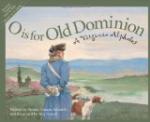But we suddenly left the frivolous kitten upon being told of what had been found in the other room just before we came. It was a heavy earthen pot sunk below the floor. We crouched about it with great interest, chiefly because we did not know what it was for. Perhaps it was merely to collect the drainage. Anyway it was not what the Daughter of the Island had fondly thought when it was first uncovered.
“I was sure,” she laughed, “that I had found a pot of money.”
Standing down there in the ruins we wondered what was the story of the old house. What feet had trod those paved floors? What had those walls seen and known of being and loving, of hopes and fears, of joys and griefs, of life and death? Of all this the uncovered ruin told nothing.
While we were at the island, three or four excavations were made and we watched them all with interest. When the steel probe had located the ruin, the digging and the excitement began. Slowly the buried walls came to light. Within the walls was usually a mass of debris to be thrown out—bricks of various sizes, shapes, and colours; cakes of the ancient shell lime; pieces of charred wood, and relics of all sorts. Some of the bricks were quite imperfectly made and had a greenish hue. We supposed them to be the oldest ones and to have been baked or dried in the sun before the colonists had kilns. Some of them had indentations that were evidently finger imprints.
“I wants to fin’ dey ole papahs,” said big John, digging heartily. “Dis hyer is a histoyacal ole place; an’ I rathah fin’ a box of dey ole papahs than three hunderd dollahs.”
Among the coloured people was an unquenchable hope of finding a pot full of money.
It was a most interesting experience to sit in the brick rubbish and watch for the queer little relics that were thrown out now and then. No great finds were made, but the small ones did very well. There appeared an endless number of pieces of broken pottery; and the design of a blue dog chasing a blue fox was evidently a popular one for such ware in James Towne.
But where was the blue dog’s head? The question grew to be an absorbing one. Each handful of dirt began or ended with a wrong piece of the blue dog mixed with bits of brass and iron and pottery that brought vividly to mind the scenes and the folk of that vanished village. Handful after handful of dirt ran through our ringers like hourglass sands of ancient days, and the clicking relics were left in our hands in the quest of the blue dog’s head.
And this was the way things went. A piece of a bowl bearing most of the blue dog’s tail; a woman’s spur, gilt and broken, worn when merry eyes peeped through silken riding masks; a bit of Indian pottery with basketry marks upon it; a blue fox and the fore legs of the blue dog; a shoe-buckle, silver too—must have been people of “qualitye” here; a piece of a cream white cup that may have been




